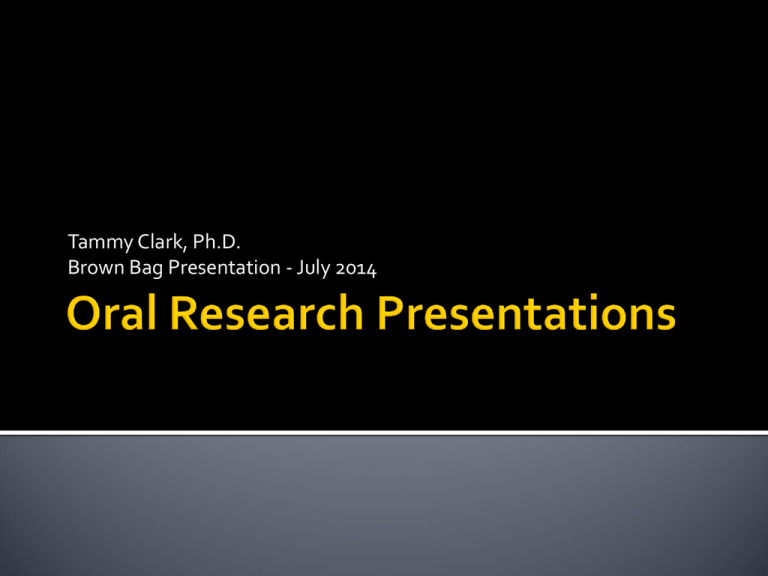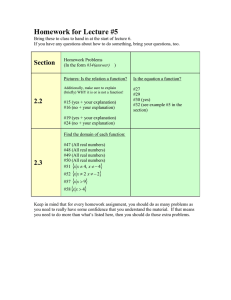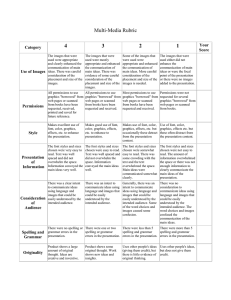Tammy Clark, Ph.D. Brown Bag Presentation - July 2014
advertisement

Tammy Clark, Ph.D. Brown Bag Presentation - July 2014 Disseminating info Graded presentation for a course Professional school interview Job interview Why are they attending? How much do they know about your topic? What would they like to learn? Is it appropriate to interject personal revelations in the talk? How much previous work should be included to set the stage? Should you include all findings? Have you come to a conclusion? Have you uncovered more questions? Make a general outline Title Slide Introduction and previous studies Your question and experimental design Your data Data analysis Your conclusions and unanswered questions Future work Acknowledgements Most sections will require more than one slide Start writing slides Find pictures after text is written Save formatting for later Descriptive name of talk Your name Your advisor’s name (depending on venue) Institution(s) that provided support Include logo if available Hook the audience Relevance Sufficient background to understand the question Briefly outline previous work that led to the question What was interesting about the previous study? What was missing? The best talks will integrate these instead of discussing them separately Clearly state your hypothesis and/or goals (this is your question) Convince the audience that your methods for discovering answers is sound by briefly stating your experimental design Concise graphics that clearly show the important aspects of your findings Typically one slide per graphic Title can be the type of data or the take-home message Include error bars Legible graphics for back of the room Increase font size Bold fine/thin font Increase line widths Avoid green and red (may not be differentiated by a color-blind person) Discussion of the data analysis should occur on these slides Restate the take-home messages and if possible link them together for an overall sense of what was accomplished Revisit the relevance of the project and connect it to your conclusions Did you accomplish your goals? Have you discovered more questions as a result of your research? This section should lead smoothly into the future work section What are the next steps? You may not be the person who will continue the project, but you should still address where your research has led to If plans have been made, it is appropriate to briefly discuss these (if time permits) Research Advisor(s) Co-workers who you have collaborated with Institution Anyone who has provided financial support for the project If appropriate, name the funding source: specific research fellowship, NIH grant number, etc… Develop your talk Don’t be afraid to try different approaches Avoid scripting Use PowerPoint as your “notecards” Think about the audience in choosing language Ask a few people to critique Practice alone first Give entire talk without interruptions Peers take notes on rough spots Afterward, go through slide-by-slide and discuss ▪ ▪ ▪ ▪ Overall organization Clear explanation of concepts Appropriate level for audience Legible font and graphics Allow for ~1 hour to critique a 10 minute presentation You cannot practice too much! Ask for laser pointer and for room access Fine-tune the timing Laser pointers Stabilize with 2-handed hold Point – don’t circle Many PowerPoint alternatives (Prezi) Avoid clutter and distracting transitions Strive for uniformity in slides Font sizes Spacing Mac vs. PC? Copy and Paste PDF documents into slides Dress Appropriately Arrive early Introduce yourself to moderator Upload presentation Bathroom break beforehand Be confident because you practiced Attend the entire conference Represent Viterbo Well!



![To create the proper [ ] symbol so that the 26 is](http://s2.studylib.net/store/data/015124009_1-471f69fb234e90a366098dc66351a189-300x300.png)
